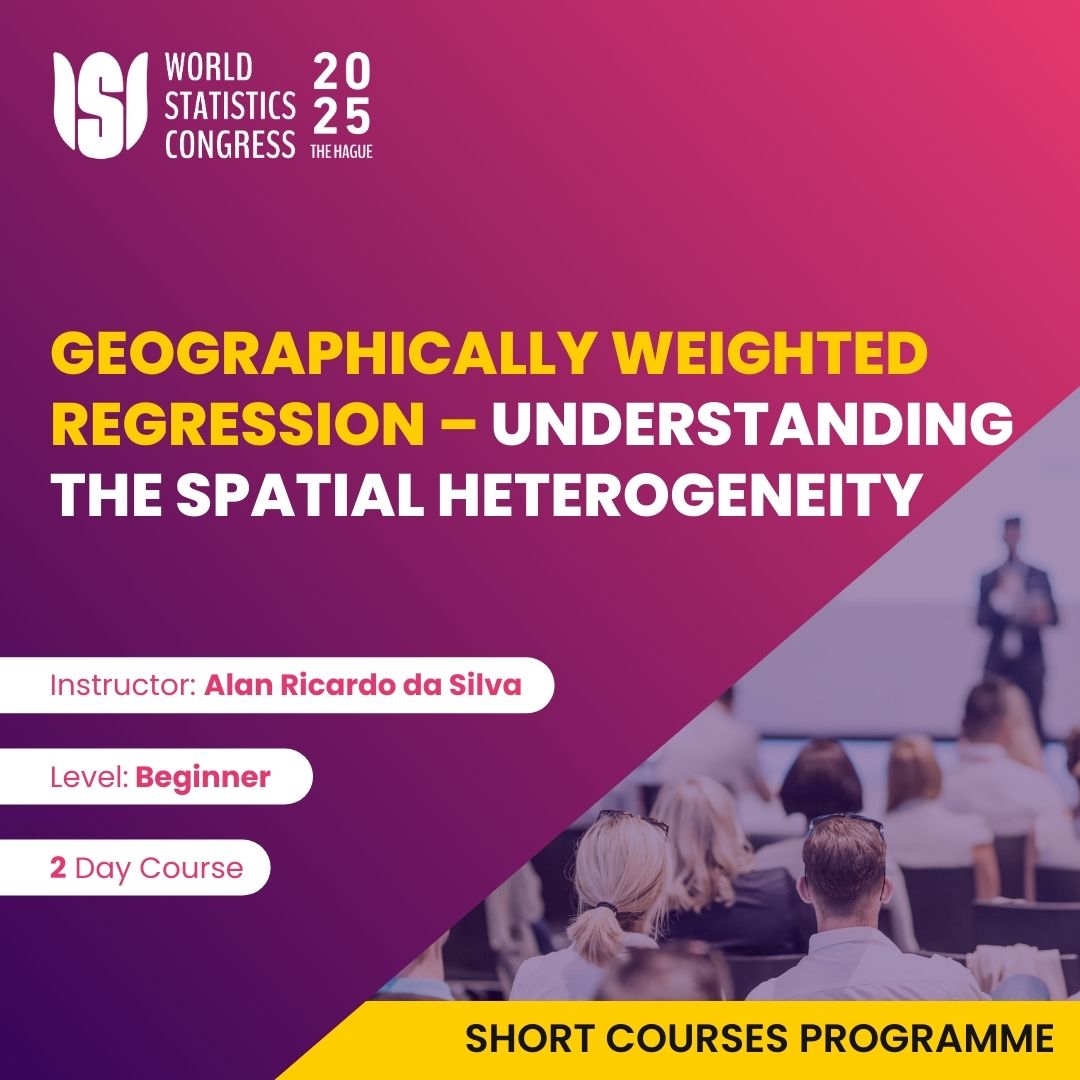
For more details on registrations and submissions for the Geographically Weighted Regression – Understanding the Spatial Heterogeneity, please first login to your account. If you do not have an account then you can create one below:
The attempt to represent reality through models, mathematical or not, continues to be a great challenge for science, which, decade after decade, always seeks to improve such tools. One of the most used mathematical modeling techniques is regression analysis, which has been updated in recent years due to the incorporation of factors that help explain and understand phenomena. Among these updates, the spatial regression treated globally and the spatial regression treated locally stand out, in which Geographically Weighted Regression (GWR) stands out. The latter differs from the former in that it analyzes the relationships between the variables in a specific way for each unit of study, and not together as is done in a global process. In this case, it is assumed that the regions j closer to region i have a greater influence on the estimates of the regression coefficients than regions further away. Thus, having a specific adjustment for each area, the final result is a better representation of the process as a whole. What justifies such an analysis is the violation of the premise of stationarity required by the global models, which allows the latter to attribute the same relationship between the variables for all the study units. Hence the need to work with more specific tools capable of providing a more detailed analysis, and thus evaluating the existing variability. Thus, the final result of an GWR model is a matrix of (n x k) of parameter estimates, where n is the amount of data and k is the number of parameters, thus making it possible to verify the results in a map. The GWR model began with the original work of Fotheringham et al. (1996) on move windows and systematized in the book of Fotheringham et al. (2002). Several other studies have dealt with this technique, such as those by Wheeler and Tiefelsdorf (2005) and Nakaya et al. (2005), which specifically deal with the problems of multicollinearity and counting data (Poisson). The work of Da Silva and Rodrigues (2014) extended the GWR model to count data with overdispersion, using the negative binomial distribution, and the work of Da Silva and Lima (2017) extended the GWR model to data restricted to the interval (0,1), using the beta distribution. An interesting aspect of spatial models (whether local or global) is that in the absence of spatial dependence, the models present exactly the same results as non-spatial models, i. e., from a spatial model it is possible to estimate the non-spatial model, but from a non-spatial model it is not possible to estimate the spatial model. The short course will address the characteristics of the GWR model, as well as its advantages and problems, in addition to what is currently being developed on this subject.

Alan Ricardo da Silva has been a professor in the Department of Statistics at the University of Brasília, Brazil, since 2009.
He holds a bachelor's degree in Statistics from the University of Brasília, a master's degree in Transportation, and a PhD in Transportation, also from the University of Brasília. Additionally, he completed a postdoctoral fellowship in Spatial Statistics at the University of St Andrews, Scotland, and Arizona State University, USA, under the supervision of Professor Stewart Fotheringham, the developer of the GWR technique.
Graduate students or professionals with some knowledge in regression analysis.
Description of course materials that will be provided to participants: presentation slides, recommended text and SAS macros. The SAS On Demand software will be used, which can be accessed free of charge through the browser, without the need for installation.
For more details on registrations and submissions for the Geographically Weighted Regression – Understanding the Spatial Heterogeneity, please first login to your account. If you do not have an account then you can create one below:
We have placed cookies on your device to help make this website better.
You can change your cookie settings in your web browser. Otherwise, we’ll assume you’re OK to continue.
Some of the cookies we use are essential for the site to work.
We also use some non-essential cookies to collect information for making reports and to help us improve the site. The cookies collect information in an anonymous form.
To control third party cookies, you can also adjust your browser settings.
Do Not Accept Third Party Cookies